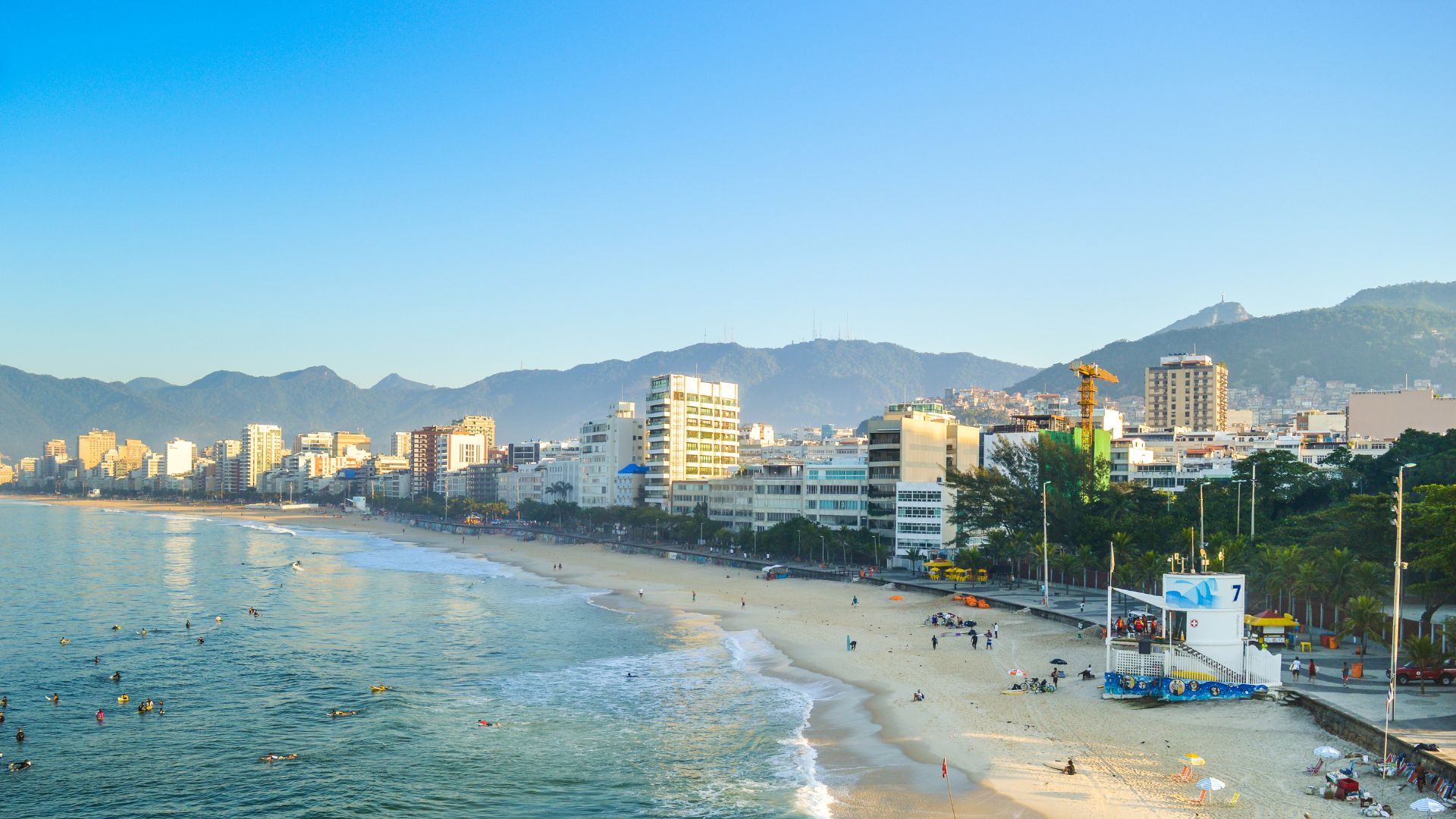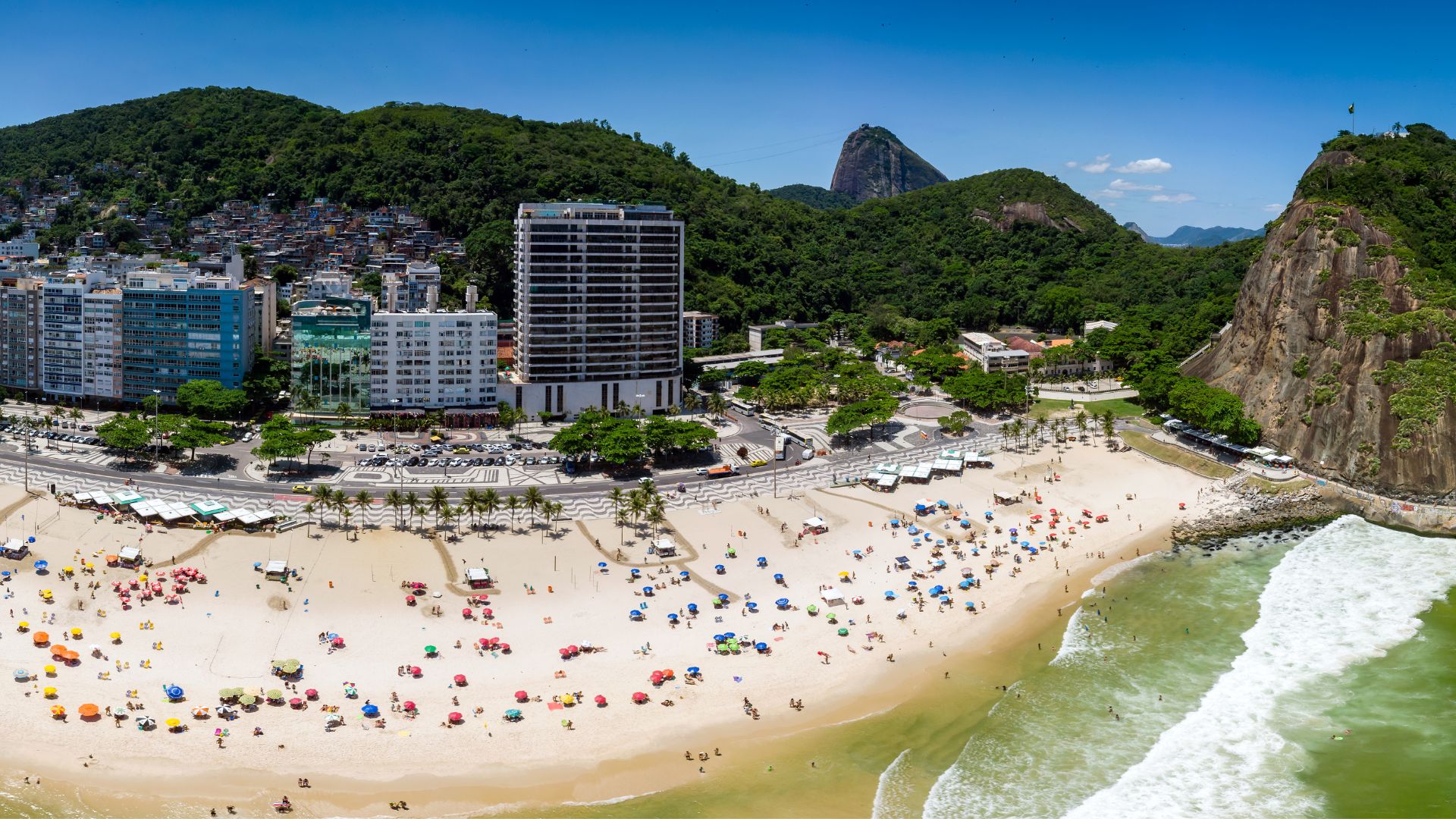Rio de Janeiro: An Insider’s Guide to the Marvelous City
There’s something magical about Rio that captures your imagination before you even arrive. The way the mountains cascade into the ocean, the rhythm of samba echoing through the streets, and that unmistakable silhouette of Christ the Redeemer watching over it all. But here’s the thing – Rio is so much more than just its postcard views.
I’ve put together this guide to help you navigate the Marvelous City like someone who actually knows what they’re doing, not just another tourist clutching their guidebook with white knuckles. From safety tips to secret sunset spots, restaurant recommendations to transportation tricks – here’s everything you need for an unforgettable Rio experience.
When to Visit Rio (Timing Is Everything)
Rio is blessed with pleasant weather year-round, but some months are definitely better than others.
Spring (September-November) offers that sweet spot of pleasant temperatures, fewer crowds, and less humidity. April, in Autumn, is another excellent choice if you want to avoid both the summer heat and the Carnival excitement.
December-February brings intense heat, more mosquitoes, and peak tourist crowds (unless you’re specifically coming for Carnival, which typically falls in February or March). July is technically winter, but don’t let that fool you – you’ll still find plenty of sunny beach days.
Heads-up: If Christ the Redeemer is on your must-see list (and it should be), check the weather forecast carefully. There’s nothing more disappointing than making the journey up to Corcovado only to find your view completely obscured by clouds. Aim for early morning visits to beat both the clouds and the crowds.
Where to Stay: Neighborhoods Matter
Where you base yourself in Rio can completely change your experience. The South Zone (Zona Sul) is generally where most tourists prefer to stay, and for good reason.
Copacabana is the most famous beach neighborhood, offering convenience and plenty of hotels at various price points. It’s older and grittier than its neighbors, but that’s part of its charm. The beach scene is lively, and you’re never far from restaurants and shops.

Ipanema offers a more upscale, safer experience. The beaches are cleaner, the dining options more refined, and the vibe more relaxed. It’s my personal recommendation for first-time visitors.

Leblon, right next to Ipanema, is even more exclusive and quieter – perfect if you’re traveling with family or want a more laid-back atmosphere.

Bear in mind: Avoid hotels under 4 stars if comfort and safety are priorities. Budget accommodations in Rio can be hit or miss, so sometimes it’s worth splurging a bit more for peace of mind.
Getting Around Rio
Rio’s sprawling layout means you’ll need to figure out transportation pretty quickly.
Ride-sharing apps are your friend. They’re safe, reliable, and remove the language barrier of trying to explain your destination. Even at night, they’re generally the best option for tourists.
The metro system connects many tourist areas, particularly in the South Zone. It’s clean, efficient, and safe – a rarity for public transportation in South America.
Buses are abundant and cheap but can be confusing if you don’t speak Portuguese. I’d recommend avoiding them unless you’re feeling particularly adventurous or are on a very tight budget.
One thing to note: Always carry some cash as backup. Card readers sometimes mysteriously fail, especially in taxis, and you don’t want to be stranded.
Safety: Let’s Talk About It
I’m not going to sugarcoat it – safety concerns in Rio are real. But they’re also manageable with some common sense.
Dress modestly and leave the bling at home. That means no flashy jewelry, designer sunglasses, or expensive watches. The quickest way to become a target is to look like one.
Be smart with your phone. In many parts of Rio, particularly the South Zone, you’ll see locals using their phones openly. But be discreet, use it quickly, and put it away. Snatch-and-run thefts are common.
At the beach, never leave your belongings unattended while swimming. Either take turns with your travel companion or ask a trustworthy-looking neighbor to keep an eye on your stuff (but don’t count on it).
Walk with purpose and stay aware. Most trouble happens when you look lost, confused, or distracted. Walking confidently goes a long way in deterring opportunistic crimes.
The good news is that major tourist attractions like Christ the Redeemer and Sugarloaf Mountain are well-guarded and generally quite safe. But downtown Rio on Sundays? That’s a different story – it becomes eerily deserted and best avoided.
Must-See Attractions (Beyond the Obvious)
Everyone knows about Christ the Redeemer and Sugarloaf Mountain – and yes, you absolutely should visit both – but Rio has so much more to offer.
Parque Lage sits at the foot of Corcovado Mountain and offers a completely different perspective of Christ the Redeemer. This former mansion turned public park features English-style gardens, aquariums in the basement, and a gorgeous courtyard café. The best part? It’s free to enter.

Jardim Botânico (Botanical Garden) is a peaceful oasis where you can escape the city chaos for a few hours. The avenue of royal palms is spectacular, and you might spot monkeys and toucans among the trees.

Arpoador Rock, nestled between Ipanema and Copacabana, offers the most magical sunset spot in the city. Locals actually applaud as the sun dips below the horizon – and once you experience it, you’ll understand why.

Escadaria Selarón (Selarón Steps) connects the neighborhoods of Lapa and Santa Teresa with vibrant mosaic tiles from around the world. The colorful staircase was created by Chilean artist Jorge Selarón as a “tribute to the Brazilian people.” Go early for photos without the crowds.

Worth noting: While the steps are generally safe during daylight hours, the surrounding area of Lapa can be sketchy after dark. Visit in the morning and then head elsewhere as evening approaches.
Beaches: The Real Rio Experience
Rio’s beaches aren’t just places to swim – they’re outdoor living rooms where cariocas (Rio locals) socialize, exercise, and people-watch.
Copacabana is the most famous stretch of sand, instantly recognizable with its black and white promenade pattern. It’s busy, vibrant, and quintessentially Rio. But it’s also more touristy and requires a bit more vigilance with your belongings.

Ipanema offers a more upscale beach experience. Head to Posto 9 (lifeguard station 9) for the young, social scene or Posto 10 for a slightly more relaxed vibe.

Leme Beach, at the far end of Copacabana, is more family-friendly and less crowded – a good option if you want a slightly more relaxed experience.

São Conrado is less visited by tourists but offers stunning mountain backdrops and you might catch hang gliders landing on the sand.

Beach essentials: Don’t bring a bulky beach towel from your hotel. Instead, buy a canga (a colorful Brazilian beach towel) from one of the vendors – they’re lightweight, dry quickly, and double as a sarong or scarf. Also, try the açaí with granola from beach vendors – it’s refreshing and addictive.
Culinary Adventures
Brazilian cuisine doesn’t get the international recognition it deserves, but Rio is a fantastic place to discover it.
Must-try dishes:
- Feijoada – A hearty black bean stew with various pork cuts, traditionally served on Saturdays
- Picanha – Brazil’s favorite cut of beef, typically served in rodízio (all-you-can-eat) steakhouses
- Moqueca – A flavorful seafood stew made with coconut milk and palm oil
- Pão de queijo – Cheese bread balls that are dangerously addictive
- Açaí – Not the overly sweetened version you might know from home, but the real deal
- Caldo de cana & pastel – Freshly pressed sugarcane juice paired with crispy stuffed pastries, often found at street fairs and markets
- Caipirinha – Brazil’s national cocktail made with cachaça, lime, sugar, and ice – simple, strong, and refreshing
Types of places to try:
- Traditional botecos (like those in Santa Teresa) for authentic feijoada in a no-frills setting
- Historic establishments – Some restaurants have been around for decades and have fascinating stories behind them
- Waterfront eateries – Many places let you grab empadas (savory pastries) and a cold beer to enjoy while watching boats in the bay
- Historic cafés – Step back in time at ornate Belle Époque cafés downtown that showcase Rio’s architectural heritage
The good news is that you can find excellent food at various price points throughout the city. From simple juice bars and por kilo restaurants (where you pay by weight) to fine dining with spectacular views, Rio has it all.
Cultural Experiences Worth Having
Rio’s vibrant culture extends far beyond its beaches and landmarks.
Lapa transforms into the city’s nightlife hub on weekends. Rio Scenarium is the most famous samba club, but arrive early or be prepared to wait in line. The three-story venue is decorated like an antique shop, and the live music is fantastic.
If you’re around on the first Saturday of each month, visit Feira do Lavradio (Lavradio Street Market) for antiques, local art, and street food. It’s a great place to pick up unique souvenirs.
The Museum of Tomorrow (Museu do Amanhã) is worth visiting as much for its striking architecture as for its forward-thinking exhibits on sustainability and science. Inside, you’ll find immersive exhibits about climate change, technology, and the future of humanity – all presented in an ultra-modern, interactive format.

Football fans should try to catch a match at Maracanã Stadium, one of the most famous football venues in the world. The atmosphere during a Flamengo or Fluminense game is unlike anything you’ll experience elsewhere. You can book match tickets or stadium tours online or at official team stores around the city – just be prepared to show your passport when purchasing.
One-Week Itinerary
If you’ve got a week in Rio, here’s how I’d break it down:
Day 1: Arrival + Local Exploration
- Get settled in your accommodation
- Take a stroll along your nearest beach
- Have dinner in your neighborhood to get oriented
Day 2: Iconic Landmarks
- Christ the Redeemer (go early, around 8:30 AM)
- Lunch at Parque Lage
- Sugarloaf Mountain for sunset
Day 3: Beach Day + Sunset
- Spend the morning at Ipanema Beach
- Walk from Leblon to Arpoador
- Watch the sunset at Arpoador Rock
Day 4: Island Paradise Day Trip
- Take an organized tour to Ilha Grande
- Enjoy snorkeling and island beaches
Ilha Grande is a car-free island paradise with jungle hikes, hidden beaches, and crystal-clear lagoons. A day tour here often includes stops at Blue Lagoon or Lagoa Verde, which feel like stepping into another world compared to the urban energy of Rio.
Day 5: Cultural Day
- Visit the Selarón Steps in the morning
- Explore the Santa Teresa neighborhood
- Check out the Museum of Tomorrow
- Optional: Royal Portuguese Reading Room
Day 6: Nature Day
- Hike Morro da Urca via Claudio Coutinho Trail
- Botanical Gardens in the afternoon
- Evening boat tour in Guanabara Bay
Day 7: Flexible Day
- Revisit favorite spots or go shopping
- Optional: Visit Niterói across the bay for the MAC Museum
Practical Tips That Actually Help
Language: Portuguese is Brazil’s official language, and unlike its Spanish-speaking neighbors, English isn’t widely spoken outside tourist areas. Learning a few basic phrases goes a long way. At the very least, download Google Translate with the Portuguese language pack for offline use.
Money: The Brazilian Real (R$) is the local currency. ATMs are widely available, but some can be finicky with foreign cards. Notify your bank before traveling and carry multiple cards if possible. A mid-range budget typically covers accommodations, food, transportation, and activities, but it’s always good to research current prices before your trip, as costs can change.
Connectivity: Research your mobile options before traveling. Requirements for purchasing local SIM cards in Brazil can be complex and change frequently. While some travelers report that Claro or Vivo kiosks in major malls or at the airport sometimes offer tourist SIMs without a CPF requirement (especially with a passport), this is not guaranteed. Have backup plans ready, such as international roaming from your home carrier or portable WiFi devices designed for travelers.
Tipping: Not as entrenched as in North America. Round up for taxis, leave 10% for good service at restaurants (often included in the bill already), and a few reais for hotel staff who help with luggage.
Water: Stick to bottled water for drinking. The tap water is technically treated, but can be contaminated on its way through aging pipes (filtered water availability in hotels could also help).
Packing essentials: Lightweight clothing, good walking shoes, high SPF sunscreen, insect repellent, a power bank for your phone, and a secure money belt or pouch.
One Last Thing
Rio is one of those rare places that lives up to the hype, but in completely unexpected ways. Yes, the views are spectacular and the beaches iconic, but it’s the rhythm of the city, the warmth of its people, and those perfect unplanned moments that will stay with you long after you leave.
Go with an open mind, stay aware but not paranoid, and embrace the carioca spirit of finding joy in simple pleasures. In Rio, the most memorable experiences often happen when you least expect them – whether it’s an impromptu samba circle on the beach, a perfect sunset at Arpoador, or a cold coconut water shared with a new friend.
The Marvelous City awaits – just remember to pack your common sense alongside your sunscreen.